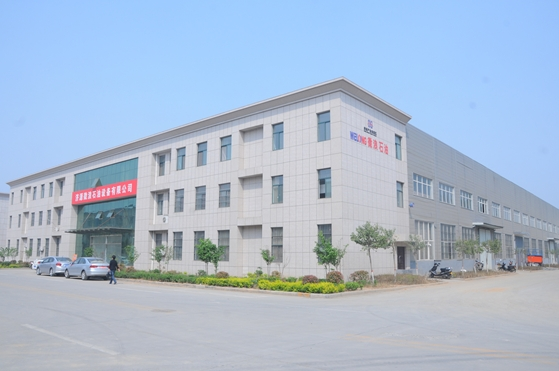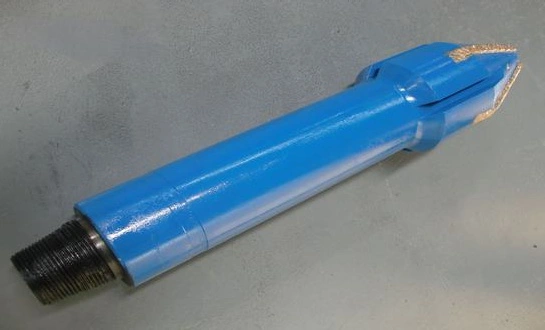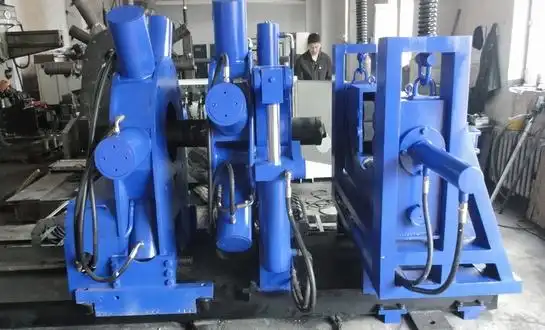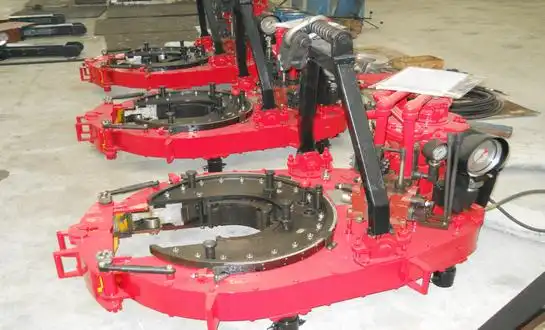What Tools Are Essential for Detecting Microscopic Work Roll Cracks?
Advanced Non-Destructive Testing Equipment
Detecting microscopic cracks in work rolls requires sophisticated non-destructive testing (NDT) equipment. Ultrasonic flaw detectors are indispensable tools for identifying subsurface defects that may not be visible to the naked eye. These devices use high-frequency sound waves to penetrate the roll material, revealing internal flaws with remarkable precision. Eddy current testing instruments are another crucial tool in the inspector's arsenal, particularly effective for detecting surface and near-surface cracks in metallic rolls. By inducing electromagnetic fields, these devices can pinpoint minute discontinuities that could potentially lead to roll failure if left unaddressed.
High-Resolution Optical Inspection Systems
To complement NDT methods, high-resolution optical inspection systems play a vital role in detecting microscopic surface cracks. Advanced digital microscopes with adjustable magnification capabilities allow inspectors to scrutinize roll surfaces in extraordinary detail. These systems often incorporate specialized lighting techniques, such as oblique illumination or polarized light, to enhance the visibility of subtle surface anomalies. Additionally, automated vision systems equipped with machine learning algorithms can rapidly scan large roll surfaces, flagging potential defects for human verification and significantly improving inspection efficiency.
Portable Hardness Testers and Surface Roughness Analyzers
While not directly used for crack detection, portable hardness testers and surface roughness analyzers are essential tools for comprehensive roll inspection. Changes in surface hardness or unexpected variations in roughness can indicate underlying material stresses or incipient crack formation. Leeb hardness testers offer a quick, non-destructive method for assessing roll hardness in situ, while portable profilometers provide detailed surface roughness measurements. By monitoring these parameters over time, inspectors can identify trends that may signal the onset of microscopic cracking, allowing for preventive action before visible defects emerge.
Step-by-Step Guide to Visual and Ultrasonic Inspection Protocols
Preparation and Safety Measures
Before initiating any inspection procedure, it's crucial to ensure proper preparation and adherence to safety protocols. Begin by thoroughly cleaning the work roll surface to remove any debris, oil, or scale that could interfere with the inspection. Ensure adequate lighting in the inspection area, and if necessary, use portable high-intensity lamps to illuminate the roll surface effectively. Personal protective equipment (PPE) such as safety glasses, gloves, and steel-toed boots should be worn at all times. For ultrasonic inspections, verify that all equipment is properly calibrated and that couplant gel is available for optimal transducer contact.
Visual Inspection Techniques
Start the visual inspection by performing a slow, methodical examination of the entire roll surface. Look for obvious signs of wear, such as grooves, pits, or discoloration. Pay special attention to areas prone to stress concentration, such as edges and transitions. Use a magnifying glass or borescope to inspect hard-to-reach areas or to get a closer look at suspicious features. Document any findings with detailed notes and photographs, ensuring that the location and extent of any defects are clearly recorded. For a more comprehensive assessment, consider using dye penetrant testing on areas where surface-breaking cracks are suspected, following manufacturer guidelines for application and interpretation.

Ultrasonic Inspection Procedure
Begin the ultrasonic inspection by selecting the appropriate transducer and calibrating the equipment using a standard reference block. Apply a thin layer of couplant gel to the roll surface to ensure good acoustic contact. Starting at one end of the roll, move the transducer in a systematic pattern across the surface, maintaining consistent pressure and orientation. Pay close attention to the A-scan display, noting any irregularities in the signal that could indicate internal flaws. For areas of concern, perform a more detailed scan using different angles and frequencies to better characterize the defect. Record all findings, including the location, depth, and size of any detected flaws. After completing the inspection, clean the roll surface to remove any residual couplant gel.
Case Study: Reducing Scrap Rates with Real-Time Work Roll Defect Mapping
Implementation of Advanced Monitoring System
A major steel rolling mill faced persistent issues with high scrap rates due to undetected work roll defects. To address this challenge, the company implemented an advanced real-time defect mapping system. This system integrated multiple inspection technologies, including continuous ultrasonic monitoring and high-speed optical scanning. Sensors were strategically placed along the rolling line to provide constant feedback on roll condition. The data was processed in real-time using sophisticated algorithms that could distinguish between normal wear patterns and potentially problematic defects.
Data Analysis and Predictive Maintenance
The real-time defect mapping system generated vast amounts of data, which were analyzed using machine learning techniques to identify patterns and predict potential roll failures. By correlating defect data with production parameters such as rolling speed, temperature, and applied forces, the system could anticipate when a roll was likely to develop critical defects. This predictive capability allowed maintenance teams to schedule roll changes or reconditioning at optimal times, minimizing unplanned downtime and maximizing roll life. The system also provided operators with immediate alerts when emerging defects were detected, enabling rapid intervention to prevent quality issues in the rolled product.
Results and Long-Term Impact
Over a six-month period following the implementation of the real-time defect mapping system, the steel mill observed a significant reduction in scrap rates. The ability to detect and address roll defects proactively led to a 30% decrease in product rejections due to surface quality issues. Moreover, the improved scheduling of roll maintenance resulted in a 25% increase in average roll life, translating to substantial cost savings in roll replacement and reconditioning. The success of this case study demonstrates the tangible benefits of integrating advanced inspection technologies with data-driven decision-making in rolling mill operations. By adopting similar approaches, other facilities can potentially achieve comparable improvements in product quality and operational efficiency.
Source: CHINA WELONG-Oilfield tools Manufacturer
FAQ about Work Roll
What factors affect work roll wear rates?
Several factors influence the wear rate of work rolls in rolling mills: 1. Rolling temperature: Higher temperatures generally accelerate wear. 2. Material hardness: Both the roll material and the workpiece hardness affect wear rates. 3. Rolling speed: Increased speeds can lead to faster wear, especially if cooling is inadequate. 4. Lubrication: Proper lubrication can significantly reduce wear. 5. Roll surface finish: The initial surface condition impacts wear progression. 6. Rolling force: Higher forces typically result in increased wear. 7. Cooling efficiency: Adequate cooling helps maintain roll integrity and reduces wear. 8. Workpiece material properties: Abrasive or hard materials can cause accelerated roll wear. Understanding these factors allows for optimized rolling processes and more effective roll maintenance strategies.
How often should work rolls be inspected?
The frequency of work roll inspections depends on several factors: 1. Production volume: Higher production rates may necessitate more frequent inspections. 2. Material being rolled: More abrasive or harder materials may require more frequent checks. 3. Roll material and hardness: Softer rolls may need more frequent inspection. 4. Historical data: Past performance and failure rates can guide inspection schedules. 5. Regulatory requirements: Some industries have mandated inspection intervals. 6. Mill configuration: Different mill types may have varying inspection needs. Generally, visual inspections are performed daily or per shift, while more comprehensive NDT inspections might be conducted weekly or monthly. Critical applications may require continuous monitoring. It's essential to develop a customized inspection schedule based on specific operational conditions and experience.
What are the signs of impending work roll failure?
Recognizing early signs of work roll failure is crucial for preventing catastrophic breakdowns: 1. Unusual vibrations or noise during operation 2. Sudden changes in product surface quality 3. Increased power consumption during rolling 4. Unexpected changes in roll gap or crown 5. Visual indications of cracks, spalling, or excessive wear 6. Abnormal temperature readings on roll surface 7. Changes in cooling water flow or temperature 8. Inconsistent strip thickness or shape 9. Increased chatter marks on rolled products 10. Sudden drops in roll hardness measurements Regular monitoring and analysis of these indicators can help predict and prevent roll failures, reducing downtime and improving product quality.
In conclusion, implementing best practices for work roll inspection in rolling mills is crucial for maintaining operational efficiency and product quality. By utilizing advanced inspection tools, following standardized protocols, and leveraging real-time monitoring systems, rolling mill operators can significantly reduce scrap rates and extend roll life. For more information on work roll inspection techniques or to discuss how to optimize your rolling mill operations, please contact us at oiltools15@welongpost.com. Welong is committed to providing innovative solutions for the oil and gas industry, including cutting-edge technologies for work roll maintenance and inspection.





